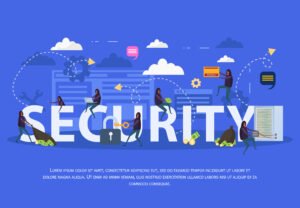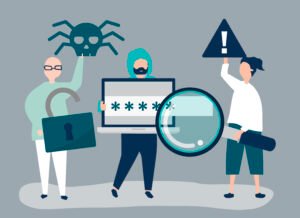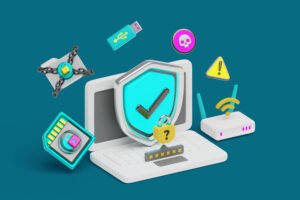Top Cybersecurity Tools You Need to Know in 2025
In today’s digital landscape, cybersecurity threats are growing more sophisticated, making it essential for businesses and individuals to protect their data and systems. Cybersecurity tools play a crucial role in identifying, preventing, and mitigating these threats. Whether you’re a security professional or just starting in the field, understanding the best cybersecurity tools can help you strengthen your defenses and respond effectively to security incidents.
What Are Cybersecurity Tools?

Cybersecurity tools are software or hardware solutions designed to protect networks, devices, and data from cyber threats such as hacking, malware, phishing, and data breaches. These tools automate threat detection, enhance response time, and provide real-time monitoring to ensure security and compliance.
Importance of Cybersecurity Tools

With the increasing number of cyberattacks, having the right cybersecurity tools is essential to:
- Prevent unauthorized access to sensitive data
- Detect and respond to threats in real-time
- Ensure compliance with industry regulations
- Protect user privacy and business reputation
Best Cybersecurity Tools in 2025

1. Splunk
Splunk is a powerful Security Information and Event Management (SIEM) tool that collects and analyzes large volumes of machine data. It helps in real-time monitoring, threat detection, and incident response by providing detailed insights into system performance and security events.
Key Features:
- Real-time data indexing and analysis
- Automated alerts for suspicious activity
- Customizable dashboards for monitoring security metrics
2. Wireshark
Wireshark is an open-source network protocol analyzer that captures and inspects data packets in real-time. It allows cybersecurity professionals to identify network issues and detect potential security threats.
Key Features:
- Live packet capturing and analysis
- Protocol decoding and filtering
- Cross-platform compatibility
3. Nessus
Nessus is a widely used vulnerability scanner that helps identify potential security risks in networks and systems. It provides detailed reports on vulnerabilities and recommends fixes.
Key Features:
- Comprehensive vulnerability scanning
- Detailed remediation suggestions
- Regular updates to detect new vulnerabilities
4. Metasploit
Metasploit is a penetration testing framework that helps security professionals test and improve their network security. It allows users to simulate attacks to identify weaknesses.
Key Features:
- Large exploit database
- Post-exploitation modules
- Automated vulnerability verification
5. Burp Suite
Burp Suite is a popular web application security testing tool. It helps identify and fix vulnerabilities in web applications by intercepting and analyzing traffic.
Key Features:
- Proxy-based interception
- Automated vulnerability scanning
- Manual testing capabilities
6. Snort
Snort is an open-source intrusion detection and prevention system (IDS/IPS). It monitors network traffic for suspicious activity and can block potential threats.
Key Features:
- Real-time traffic analysis
- Signature-based detection
- Custom rule creation
7. OpenVAS
OpenVAS (Open Vulnerability Assessment Scanner) is an open-source vulnerability scanner that detects security issues in networks and systems.
Key Features:
- Extensive vulnerability database
- Fast scanning and detailed reporting
- Continuous updates for new threats
8. KALI Linux
KALI Linux is a penetration testing and ethical hacking distribution that includes a wide range of security tools. It is widely used for network and application testing.
Key Features:
- Pre-installed hacking and security tools
- Lightweight and customizable
- Large community support
9. Crowd Strike Falcon
Crowd Strike Falcon is an endpoint protection platform that provides real-time threat detection and response. It uses AI and machine learning to prevent advanced attacks.
Key Features:
- Cloud-based threat intelligence
- Lightweight agent for minimal system impact
- Automated threat response
10. Norton 360
Norton 360 is an all-in-one security solution for personal and business use. It offers antivirus, firewall, and identity protection.
Key Features:
- Real-time malware and virus protection
- Secure VPN for encrypted browsing
- Password manager and dark web monitoring
How to Choose the Right Cybersecurity Tools

When selecting a cybersecurity tool, consider the following factors:
1. Type of Threat: Identify the type of cyber threats your network or system is most vulnerable to (e.g., malware, phishing, DDoS).
2. Ease of Use: Choose tools with user-friendly interfaces and comprehensive support.
3. Scalability: Ensure the tool can handle increasing network traffic and growing data volumes.
4. Budget: Evaluate the cost-effectiveness of the tool based on your security needs and budget.
Benefits of Using Cybersecurity Tools

- Improved Threat Detection: Real-time analysis and automated alerts enhance threat detection and response.
- Reduced Downtime: Quick response to security breaches minimizes system downtime.
- Data Protection: Encryption and secure access prevent unauthorized access to sensitive data.
- Regulatory Compliance: Helps businesses meet industry security standards and avoid penalties.
Conclusion

Cybersecurity tools are essential for protecting networks, devices, and data from evolving threats. From SIEM solutions like Splunk to vulnerability scanners like Nessus and penetration testing frameworks like Metasploit, these tools provide a comprehensive defense strategy. By investing in the right cybersecurity tools, businesses and individuals can safeguard their digital assets and ensure a secure online environment.